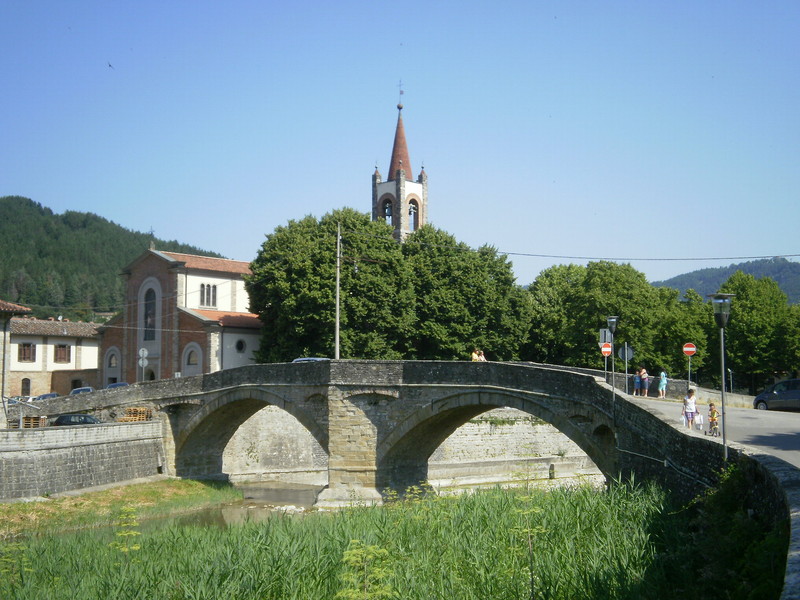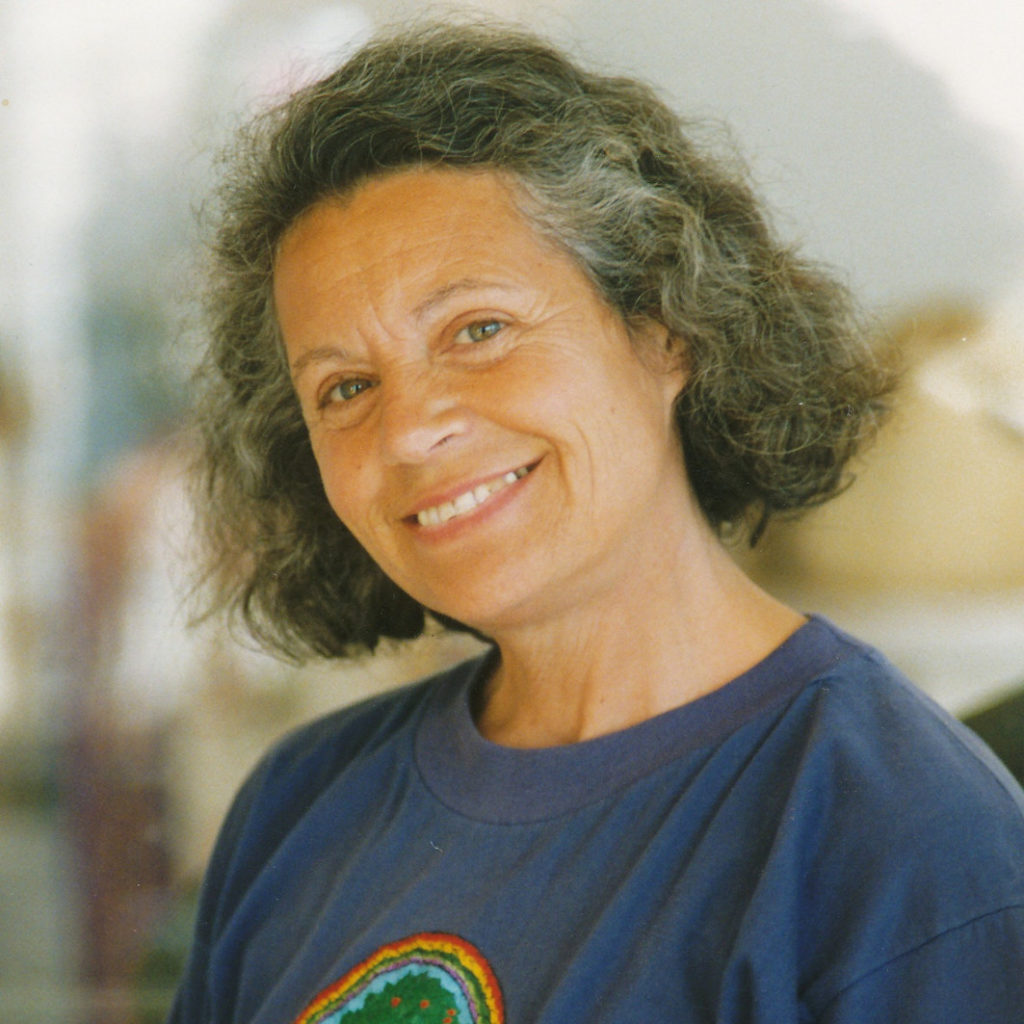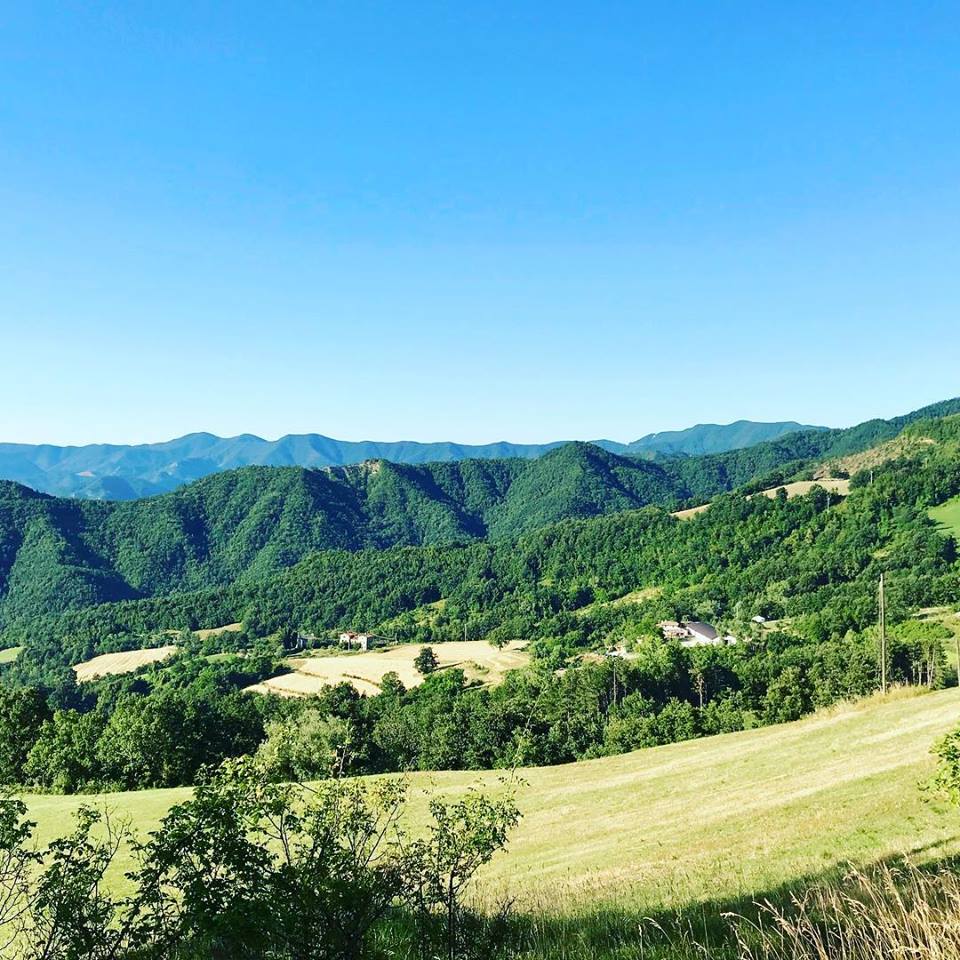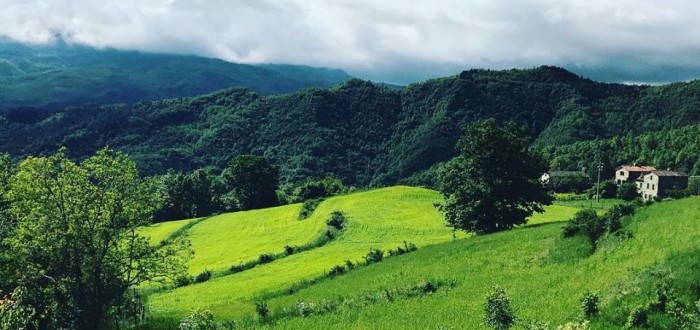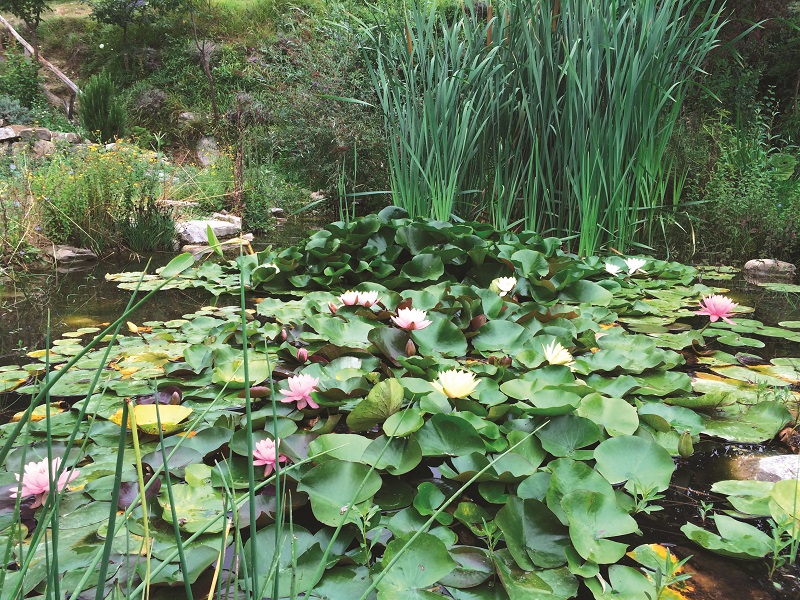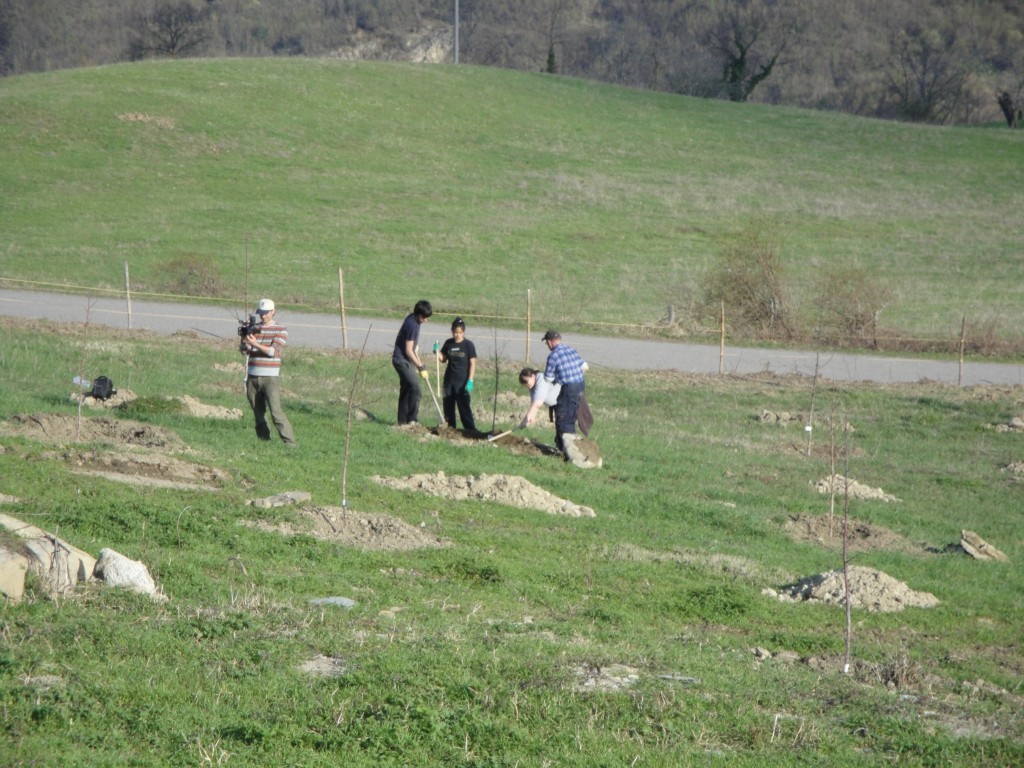LAKE PONTINI AND LAKE LUNGO
Lake Pontini (748 m asl) and Lake Lungo (616 m asl) were formed following a huge landslide which broke off on February 15th 1855 from San Cataldo, on the north-west side of Mount Còmero. Its slow fall, destroyed about fifty houses, then reached the Savio river, where it temporarily obstructied the course.
San Piero in Bagno
Located in the valley floor, along the river Savio and the European Road E/45, San Piero in Bagno is part of the municipality of Bagno di Romagna, a small town with construction, forestry, metallurgical and clothing activities, along with services, restaurants, hotels and facilities for leisure and sport.
Built in the thirteenth century as “market” for the castle of Corzano, the town developed especially under the long domination of the Republic of Florence and even today the Wednesday market is still a place for meeting, exchanging and chatting for all the inhabitants of the area and the surrounding valleys.
Who was Emilia Hazelip
We have already talked about synergistic agriculture in a previous article, but today we would like to take a deeper look at the life and aspirations of its creator, the Spanish Emilia Hazelip (Barcelona, 1937 – Carcassonne, 2003).
She was born in 1937 in Barcelona, while World War II bombs were falling on her hometown. When she turned 18, she decided to leave Spain, embarking on a path that led her to challenge the Establishment of that period. During the ’60s Emilia experienced community life at the beginning of the hippie movement, soon realizing how the practices of ploughing and cultivating on an uncovered land were absolutely against nature. At the same time, Emilia wanted to find different ways to live in contact with the land, respecting the laws of nature and reintegrating the human being in the cycle of life.
Self-sufficient health
Human beings, like the earth, need balance and biodiversity to live fully and achieve the best of themselves
Most of the life forms on Earth are experiencing a phase of constant weakening and, among these, human being is certainly the one who is suffering the most, even if we are not often aware of it. People who live in Western countries are constantly and chronically ill, both physically and mentally, but most of time they don’t realize it. Medicines developed by drug multinationals relieve symptoms, reduce pain and keep sick people alive for a long time. The prestige of modern medicine is often based on the statistics of reduction of mortality and diseases after the industrialization of a country, but these numbers are mainly due to the increase of quality of life and diet and the adoption of elementary measures of hygiene. Sewage systems, clean and sanitized water, having 3 meals a day and washing dishes have had a much greater influence on improving health and life expectancy than the complex methods of specialist care.
La salute autosufficiente
L’uomo, come la terra, ha bisogno di equilibrio e biodiversità per vivere nel pieno delle proprie facoltà e realizzare il meglio di sé
La maggior parte delle forme di vita sulla Terra sta vivendo una fase di indebolimento costante, fra queste l’essere umano è sicuramente quello che sta soffrendo di più, anche se spesso non ne è cosciente. Gli uomini occidentali sono costantemente e cronicamente malati, sia fisicamente che mentalmente, ma spesso non se ne accorgono: i medicinali messi a punto dalle multinazionali del farmaco alleviano i sintomi, riducono il dolore e mantengono in vita per lungo tempo persone malate. Il prestigio della medicina spesso si basa sulle statistiche di riduzione della mortalità e di alcune malattie a seguito dell’industrializzazione di un Paese, ma questi numeri sono soprattutto dovuti alla modificazione dell’habitat, del regime alimentare e all’adozione di elementari misure d’igiene. Le fognature, l’acqua pulita e igienizzata, tre pasti al giorno o lavare i piatti hanno avuto un’influenza molto maggiore sul miglioramento della salute e dell’aspettativa di vita rispetto dell’insieme dei complessi metodi di cure specialistiche.
RE-start taking care of the world
Permaculture, self-sufficiency and a great desire to improve our lives.
When I find myself talking to someone about what the future of mankind will be, I receive the most incredible answers: from those who could not care less about it, to those who are completely catastrophic: “there is nothing we can do about it”.
RI-cominciare a prenderci cura del mondo
Permacultura, autosufficienza e tanta voglia di migliorare la nostra realtà
Quando mi trovo a parlare con qualcuno di quel che sarà il futuro dell’uomo, ricevo le risposte più incredibili: da chi non si preoccupa minimante della cosa a chi è completamente catastrofista, “tanto non c’è più niente da fare”.
L’agricoltura naturale può salvare il mondo
Dagli evidenti disastri dell’agro-business alla straordinaria produttività delle micro-fattorie a misura d’uomo e di Pianeta
Esistono centinaia di modi di fare agricoltura e tante sfaccettature diverse, ma sommariamente potremmo dividere l’agricoltura in due grandi categorie. La prima categoria è l’agricoltura industriale, caratterizzata dalla costante ricerca per sostituire i sistemi naturali che regolano i cicli della terra con sistemi artificiali che dovrebbero, in teoria, ottenere migliori risultati per l’uomo. La seconda categoria, che si potrebbe definire agricoltura naturale, cerca di capire più a fondo i cicli della terra per imitarli e trarne beneficio. È un’agricoltura che richiede molte più conoscenze e manodopera ed è orientata all’autosufficienza e la territorialità.
Water in Permaculture
Strategies for a water-rich soil
Water covers 70% of our planet, even though we can only use a minimum part of it, since 97% of water is salted. ¾ of the 3% of fresh water are in the form of ice and 50% of the remaining water is around 700 m under the ground, enclosed in rocks and not usable. Overall, fresh water available in lakes, rivers, groundwater layers and the atmosphere represents only 0,375% of total water.
WHAT WE PLANTED AT THE FARM
Since 2010 we have planted at the Farm several thousands of plants including bushes, fruit trees, flowers, vegetables, etc.
Let’s see in details which are the main fruit plants at La Fattoria dell’Autosufficienza…
Newsletter
ARGOMENTI
- Activities (8)
- Attività (10)
- Attrattive (16)
- Cosa fare (22)
- Farm products (4)
- Fattoria dell'autosufficienza (39)
- Fattoria dell'autosufficienza (51)
- Fauna (8)
- Flora (5)
- I nostri modelli (14)
- Istruzioni per viaggiare (2)
- News (63)
- News (96)
- Our models (14)
- Permacultura (30)
- Permaculture (23)
- Prodotti della fattoria (4)
- Senza categoria (4)
- Senza categoria (2)
- Things to do (22)
- Tourist attractions (15)

